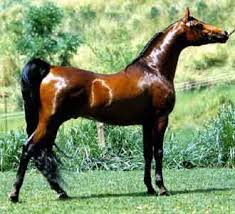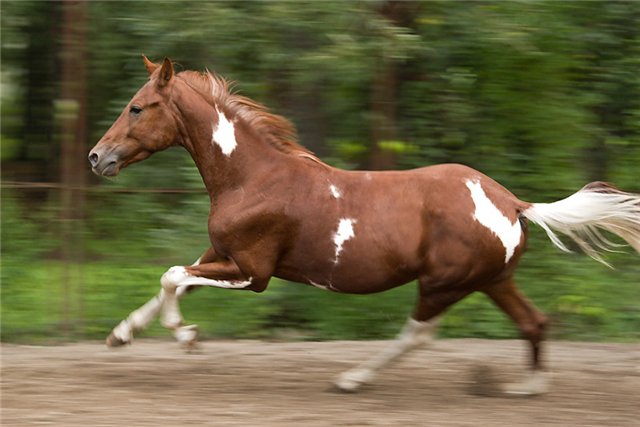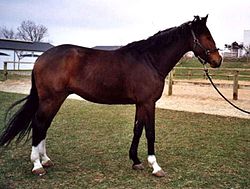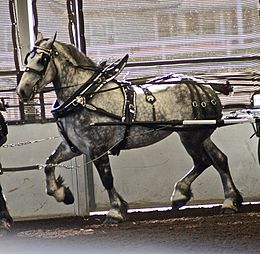OSSETIAN ROCK HORSE (part 1)
 The horse played an important role in the life of Ossetians. In almost all written sources mentioning Ossetians, one can always find reports of their horses [2; 7; 8; 13; fourteen; 16]. Osteological material in the burial places of antiquity and the Middle Ages testifies to the widespread use of horses among the Ossetian ancestors. Ethnographic material demonstrates the important place of a horse among Ossetians during the period of traditional societies [1; 5]. The data of Ossetian linguistics and folklore also indicate the development of horse breeding among Ossetians in the past [15].
The horse played an important role in the life of Ossetians. In almost all written sources mentioning Ossetians, one can always find reports of their horses [2; 7; 8; 13; fourteen; 16]. Osteological material in the burial places of antiquity and the Middle Ages testifies to the widespread use of horses among the Ossetian ancestors. Ethnographic material demonstrates the important place of a horse among Ossetians during the period of traditional societies [1; 5]. The data of Ossetian linguistics and folklore also indicate the development of horse breeding among Ossetians in the past [15].
The relevance of the topic of this study is determined by the extremely unsatisfactory state of knowledge of the issue of the Ossetian horse. A deep and comprehensive study of the role of the horse in military affairs involves the study of the type of horse that was used by Ossetians in the mountains. In this article, based on various sources, mainly written evidence, we will consider the features of the Ossetian rock breed of the horse and try to illuminate the history of its origin.
The aim of the study is to highlight the origin of the Ossetian mountain horse. The study material was data from written sources containing valuable information about Ossetian horses and archaeological material. The work was performed using the historical and comparative method and the principles of objectivity and systemicity traditional for historical research.
Discussion of the results of the study
Since ancient times, the North Caucasus was famous for its horses; several breeds, mainly horseback breeds, were bred here. To date, many of them, including the Ossetian horse, have disappeared or lost value.
A description of Ossetian horses is available to many authors who at various times visited the mountain gorges of Ossetia. They are quite concise and do not reflect all the features of the exterior of the Ossetian mountain horse. However, despite the brevity of these messages, they nevertheless convey the originality and some distinguishing features of the type of horse of interest to us.
According to the observations of Yu. Klaprot, who traveled around the Caucasus at the beginning of the 19th century, “the Ossetian horses are not large, but their legs are so strong that there is no need to shoe them, despite the fact that they constantly walk on stones; they are excellent for crossing mountains, are very hardy and, when they can firmly put their feet, they never slip [8, p. 173]. I. Blaramberg, who wrote about Ossetians in the first half of the 19th century, noted: “Their horses are not very large, but they have so strong legs that although they always walk on stones, they do not need to be pulled up: they can climb perfectly mountains, they are hardy and never slide off [2, p. 157]. A. Yanovsky, who visited the gorges of Ossetia many times, also gives a description of the local mountain horse: “Ossetian horses are small and ugly, but very strong, requiring little feed, they endure difficult and lengthy crossings in steep mountains” [16, p. 26]. V. Pfaf, who studied different aspects of Ossetian life in the last third of the 19th century, remarked about their horses: “One can only be surprised at the extraordinary agility, strength and dexterity of these beautiful mountain horses. Sitting on such a horse, you can entrust yourself with its instinct and, having closed your eyes, move across the most terrible abysses ”[13, p. 152].
Member of the Russian-Turkish war of 1877-1878. Colonel of the Life Guards Preobrazhensky Regiment A.A. Bers praised Ossetian mountain horses. He pointed out that they are unpretentious, but nimble and nimble, they move excellently in the mountains and generally feel excellent in the mountains [14, p. 294].
However, if we turn to written sources on the history and ethnology of the Caucasus, we find similar evidence on horses of other Caucasian peoples similar to the above. We will not quote here all the reports about the horses of other mountain peoples, but we will give some evidence to highlight the issue. So, Yu. Klaprot gives a description of the horses of several Caucasian peoples. About Karachais, he writes: “Karachai keep numerous sheep, donkeys, mules (frames) and horses, which, although small, are hardy, strong, hot and surprisingly adapted for a trip to the mountains” [9, p. 171]. Evidence of J. Klaproth confirms S. Bronevsky. He reports that there are about 200 families of Karachays, and “they have a small but strong breed of mountain horses, known as the Karachays” [3, p. 216]. Y. Klaprot reports that the Balkars keep many horses “… small and unable to carry heavy loads, but very useful when traveling among the mountains, for the sake of which they are sold in large quantities to the residents of Imereti and Mingrelia” [9, p. 180]. S. Bronevsky somewhat contradicts him, emphasizing that the Chegemians (Balkars living in the upper reaches of the Chegem River) “instead of horses use the breed of hinnies, called frame …” [3, p. 215]. About horses of the Ingush, Yu. Klaprot reports that the large Ingush “have a very good breed of horses” [9, p. 276]. However, in his message, he does not describe the exterior features of these horses. G.K. has information about the appearance of the horses used by the Ingush. Martirosiana.




